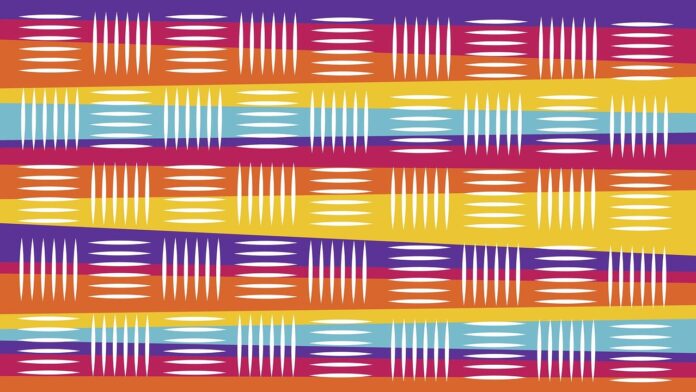Business casual, a dress code that has become increasingly prevalent in workplaces around the world, represents a balance between the formality of traditional business attire and the comfort of more casual clothing. Business casual, often simply referred to as “casual” in a work setting, is a sartorial choice that allows employees to maintain a professional appearance while also feeling at ease in their clothing. In this extensive exploration, we will delve into the world of business casual attire, uncovering its origins, evolution, guidelines, and its significance in contemporary workplaces. Business casual, a dress code that has not only redefined workplace fashion but also mirrors the shifting paradigms of professionalism and personal expression in the modern work environment.
Origins and Evolution of Business Casual
The concept of business casual emerged in the latter half of the 20th century as a response to changing social norms and evolving workplace dynamics. It represents a departure from the traditional dress codes that were prevalent in corporate environments, where suits, ties, and formal attire were the standard.
The origins of business casual can be traced back to the “casual Fridays” trend that gained popularity in the United States during the 1960s and 1970s. Some companies began allowing their employees to dress more casually on Fridays as a way to boost employee morale and promote a relaxed atmosphere at the end of the workweek. This practice was influenced by the desire to create a more comfortable and less rigid work environment.
As the idea of casual Fridays gained traction, businesses recognized the benefits of allowing employees to dress in a more relaxed manner on other workdays as well. This marked the initial shift toward what we now refer to as business casual attire.
The evolution of business casual attire continued throughout the 1980s and 1990s, as companies began to formalize their dress code policies. It was during this period that the term “business casual” was coined to describe the attire that fell between traditional business attire and casual wear. The goal was to strike a balance, allowing employees to maintain a professional image while experiencing greater comfort and flexibility in their clothing choices.
The adoption of business casual dress codes was also influenced by the tech industry, particularly in regions like Silicon Valley, where a more relaxed work culture and innovative thinking were prevalent. Tech companies were among the first to embrace a dress code that blurred the lines between formal and informal attire, reflecting their progressive and unconventional approach to business.
In the 21st century, business casual has continued to evolve, and its acceptance has expanded to various industries and sectors. Today, it is not uncommon to find business casual attire in corporate offices, creative agencies, educational institutions, and even in some customer-facing roles. Its evolution reflects a broader cultural shift toward a more inclusive and diverse workplace environment.
Defining Business Casual
Business casual is a dress code that can vary significantly depending on the industry, company, and region. It lacks the strict guidelines of traditional business attire, such as suits and formal dresses, but maintains a level of professionalism that sets it apart from casual wear.
To define business casual, it is essential to consider the key elements that make up this dress code:
1. Tops: Business casual tops for men typically include dress shirts, collared shirts, and knit or polo shirts. Ties are generally optional, and jackets or blazers may be worn but are not always necessary. Women can wear blouses, dress shirts, knit tops, and sweaters. Sleeveless tops are acceptable, but they should not be too revealing, and jackets or blazers can be added for a more formal look.
2. Bottoms: For men, business casual bottoms include dress slacks, chinos, or khakis. Jeans, if allowed, should be clean and in good condition. Women can wear dress slacks, skirts, khakis, or dressy jeans if permitted. Skirts and dresses should be of appropriate length, typically at or below the knee.
3. Footwear: Business casual footwear for both men and women often includes leather shoes, loafers, flats, and dressy sandals. Sneakers are typically not considered business casual unless expressly permitted by the dress code.
4. Accessories:* Accessories in a business casual wardrobe can include belts, ties, scarves, and jewelry. While accessorizing is encouraged, it is essential to maintain a sense of moderation and professionalism. Flashy or oversized accessories may not align with the business casual aesthetic.
5. Grooming:* Good grooming is a crucial aspect of business casual attire. Personal hygiene, neat hairstyles, and well-maintained clothing are essential. Men should keep facial hair well-groomed, and women should ensure their makeup and nail polish are understated.
6. Outerwear:* Depending on the weather, individuals may choose to wear overcoats, cardigans, or lightweight jackets as part of their business casual attire. These should complement the overall look and maintain a professional appearance.
7. Dress Code Policies:* It’s important to note that individual companies may have specific dress code policies that define what is and isn’t acceptable as business casual attire. These policies may vary, so employees should refer to their company’s guidelines for clarity.
Guidelines for Business Casual Attire
Business casual attire is often open to interpretation, which can make it challenging to establish a universal standard. However, there are some general guidelines that individuals can follow to ensure they adhere to the business casual dress code:
1. Know Your Company’s Policy:* The first and most crucial step is to understand your company’s dress code policy. Some organizations have specific guidelines for business casual attire, while others may rely on employees to use their judgment. Familiarize yourself with your company’s policies and any updates or revisions.
2. Maintain a Professional Appearance:* While business casual allows for more relaxed clothing, it is essential to maintain a professional appearance. Clothing should be clean, well-fitting, and free of wrinkles. Avoid clothing with visible tears, stains, or excessive wear.
3. Choose Appropriate Tops:* Select tops that are clean and well-maintained. T-shirts, especially those with graphics or logos, are typically not considered business casual. Collared shirts and blouses are a safer choice. Avoid overly casual tops like tank tops.
4. Consider Bottoms:* Choose pants or skirts that are clean, well-fitting, and in good condition. Jeans may be acceptable in some settings, but they should be free of rips or excessive fading. Shorts and athletic wear are generally not appropriate for business casual.
5. Footwear Selection:* Opt for footwear that is clean and in good repair. Sneakers, flip-flops, and overly casual sandals are typically not considered business casual. Leather shoes or flats are a safe choice.
6. Accessorize Mindfully:* Accessories can enhance your outfit, but it’s important to exercise moderation. Avoid excessive jewelry, flashy accessories, or anything that may be distracting in a professional setting.
7. Dress for the Occasion:* Consider the nature of your work and any specific events or meetings you may have on a given day. While everyday business casual attire is suitable for most workdays, you may need to dress more formally for client meetings, presentations, or special occasions.
8. Grooming and Personal Hygiene:* Good grooming is essential. Maintain a clean and neat appearance, including well-kept hair, nails, and personal hygiene. Personal fragrance should be subtle, as strong scents can be overwhelming in a professional setting.
9. Adapt to Industry Norms:* The level of formality in business casual attire can vary by industry and region. Take into account the prevailing dress code standards in your specific field. What is considered business casual in a tech startup may differ from what’s expected in a law firm.
10. Dress Codes When Working from Home:* With the increasing prevalence of remote work, understanding what constitutes business casual attire in a virtual environment is essential. Even when working from home, it’s advisable to dress professionally for video conferences and client meetings.
The Significance of Business Casual Attire
Business casual attire holds great significance in the contemporary workplace, impacting various aspects of professional life. Here are some of the key areas in which business casual attire plays a crucial role:
1. Employee Comfort:* Business casual attire allows employees to feel more comfortable and at ease in the workplace. This level of comfort can positively impact morale, job satisfaction, and overall well-being.
2. Personal Expression:* Business casual attire provides individuals with the opportunity to express their personal style and individuality within the boundaries of professional dress. It permits a degree of self-expression that traditional business attire does not.
3. Adaptability:* The versatility of business casual attire makes it suitable for a wide range of professional settings. It allows individuals to transition from day-to-day tasks to more formal occasions with ease.
4. Inclusivity:* Business casual attire is often considered more inclusive and accommodating, as it eliminates some of the barriers and challenges associated with strict dress codes. It can be a welcoming choice for individuals from diverse backgrounds and cultures.
5. Modern Work Environments:* In today’s rapidly evolving work environments, business casual attire aligns with the shift toward flexible work arrangements, remote work, and the blurring of traditional office boundaries.
6. Enhanced Productivity:* Employees who are comfortable in their attire may experience increased productivity. Feeling at ease in their clothing can positively impact their focus and efficiency.
7. Client Interactions:* Business casual attire provides a balance between professionalism and approachability, which can be particularly advantageous when interacting with clients or customers. It communicates a sense of competence while maintaining a welcoming demeanor.
8. Workplace Culture:* The adoption of business casual attire can contribute to shaping a workplace culture that values innovation, creativity, and adaptability. It aligns with the dynamics of modern work environments.
The Future of Business Casual
The future of business casual attire is likely to be influenced by several factors, including changes in work culture, fashion trends, and evolving societal norms. Here are some potential trends and developments in the world of business casual:
1. Greater Flexibility:* As workplaces continue to embrace remote work and flexible arrangements, business casual attire may become even more prevalent. With fewer employees in traditional office settings, the need for strict dress codes may diminish.
2. Sustainability:* The fashion industry is moving toward greater sustainability, and this trend is likely to impact business casual attire. We may see a shift toward clothing made from eco-friendly materials and practices.
3. Personalization:* Technology, such as 3D printing and custom tailoring, may allow individuals to personalize their business casual attire further. Customized and tailored clothing could become more accessible.
4. Gender-Neutral Attire:* The trend toward gender-neutral and inclusive fashion is expected to influence business casual attire. More options for gender-neutral clothing and styles may become available.
5. Virtual Wardrobes:* With the growth of virtual reality and augmented reality, individuals may have the option to create virtual wardrobes for remote work meetings and virtual interactions.
6. Sustainable Practices:* Businesses and individuals may increasingly prioritize sustainable and ethical practices in fashion, influencing the choice of materials and clothing brands.
7. Hybrid Work Environments:* As hybrid work environments become more common, with employees splitting their time between office and remote work, business casual attire may continue to adapt to the changing demands of these settings.
Conclusion
Business casual attire has evolved significantly over the years, reflecting the changing dynamics of the modern workplace. It offers employees the flexibility to dress comfortably while maintaining a professional appearance. Its significance extends beyond mere fashion choices, impacting areas such as employee comfort, personal expression, workplace culture, and client interactions.
The future of business casual attire is likely to be shaped by ongoing shifts in work culture, sustainability trends, and technology innovations. As the world of work continues to evolve, so too will the dress codes that define it. Business casual, a testament to the adaptability of the professional world and the ever-changing landscape of contemporary fashion.














